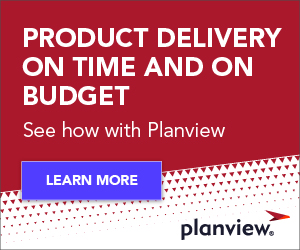
The Project Management Institute defines a program as a group of related projects managed in a coordinated way to obtain benefits and control not available from managing them individually. But, what is a program – really? And what is a program manager?
Programs are intended to accomplish a business objective. This requires individuals who can manage the overall vision and execute on a strategic initiative. Project managers execute on parts within a program roadmap. While program managers may or may not have the actual title, they are often considered leaders who are distributed throughout the organization and take on portfolio management roles and responsibilities.
To get things done and enable change in the organization, they also serve as strategic coordinators across teams, departments, business units and even geographies. They manage challenges such as getting initial program funding, managing spend to an ROI or another benefit and shifting schedules, resource availability, and conflicting priorities constantly. Program managers do all this while focusing on the expected value to key stakeholders both inside and outside of the organization.
They execute on strategy, not projects.
Needless to say, having the responsibilities of a “program manager” is a huge undertaking! Program managers trust their project managers with running projects so they can focus on managing the twists and turns of successfully delivering the intended benefit and realizing the organization’s strategic goals.
So, why have PPM solutions traditionally ignored the needs of program managers, forcing them to bend project management tools to their requirements?
With Planview Enterprise 12, I’m excited we are giving program managers the ability to own and manage programs from idea to delivery, fully integrating strategy with execution.
By focusing on program managers’ unique roles and responsibilities, Planview Enterprise 12 will change how they create, manage and communicate the program. They will be able to:
- Quickly create a program plan, not a project plan
- Build out what needs to be completed and executed under the program and then hand it off to project managers to create schedules and manage the traditional project activities
- Improve program governance by managing, at the program plan level, with a consolidated real-time rollup view from project to program with key milestones
- Improve the ability to adjust, prioritize and make decisions more effectively as projects shift, even across programs in a strategic portfolio
- Reduce the effort and time to collect information from project managers while improving communication and collaboration
- Provide a complete and integrated business case of the schedule, the financials and all other information about the program and its incremental benefits, regardless of where it is in the program lifecycle, from idea to delivery
- Provide the ability to have a repeatable, simple program lifecycle with standard program reporting
Program managers spend much of their time communicating, collaborating and coordinating across the organization. They need tools that can help make these activities easier. Whether an organization has just a few or many programs running at a time, these are often large, expensive, important and complex. Program managers are respected leaders who understand how the business works and know how to get things done. So, isn’t it time that we understand them and provide a solution that fits their needs?
Yes, the answer is 12 – Planview Enterprise 12.
Check back for additional ways Planview Enterprise 12 brings true strategic planning into the world of program management and PPM.




